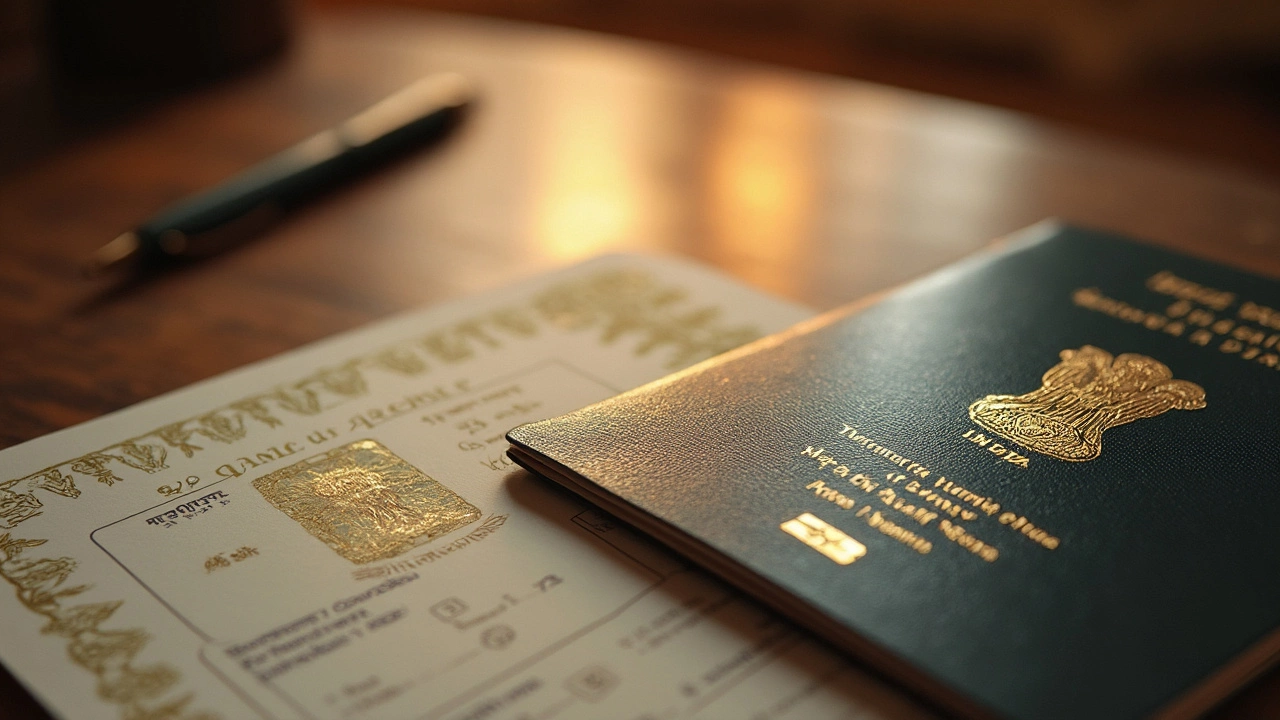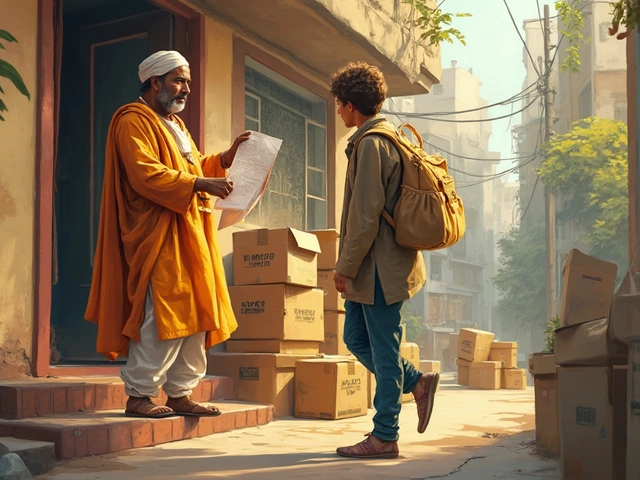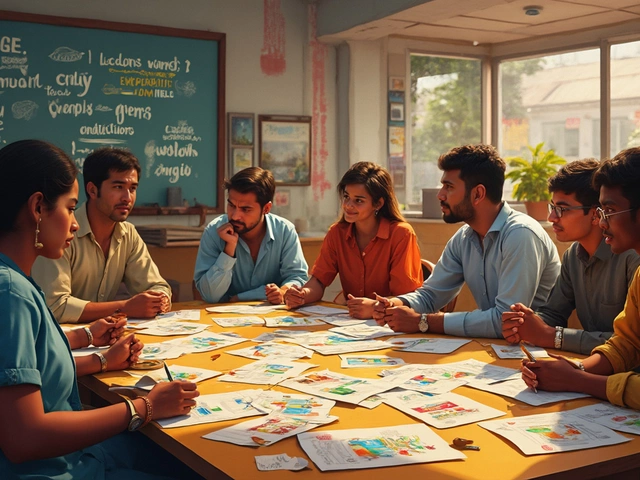If you’re getting married in the US but have Indian roots, you’ve probably already Googled “Can I register my marriage in the US?” and ended up more confused than when you started. Good news: it’s not rocket science, but you do need to know where you stand so you don’t end up running in circles with paperwork.
Here’s the quick answer—yes, you can legally register your marriage in the US. Every state in the US has the power to recognize marriages performed on its soil. So, you’ll need to follow the rules laid out by the state where you’re getting married, which usually means applying for a marriage license at a local county office, paying a small fee, and showing ID. After the ceremony, a certified marriage certificate seals the deal.
But the plot thickens if you also want your marriage to be recognized in India. A US marriage certificate isn’t automatically recorded in India. That means if you plan to live, buy property, or need a spouse visa in India, US paperwork alone won’t cut it. Don’t leave things to chance: you need to understand both sides to stay out of trouble later.
- US Marriage Registration: How It Works
- Will the US Marriage Certificate Count in India?
- Indian Citizens and NRIs: The Real Process
- Tips for a Hassle-Free Cross-Border Marriage
US Marriage Registration: How It Works
Alright, here’s the simple play-by-play for how marriage registration really works in the US. First, every state makes its own marriage rules. Some things are the same everywhere (like, you need to be an adult or get parental consent), but other stuff—paperwork, waiting times, witnesses—doesn’t always match up. You can’t just sign a paper anywhere and call it official. You’ve got to follow local steps, or your marriage won’t show up in the records.
Here’s what most couples need to do to get their marriage recognized:
- Go to the county clerk’s office (or city hall) in the state you want to get married. Both of you usually need to be present.
- Show your IDs—this could be a passport, driver’s license, or other official ID. Some states may ask for your birth certificate or proof a previous marriage ended.
- Fill out the application for a marriage license. This usually takes 10-15 minutes.
- Pay the license fee—anywhere from $30 to $100, depending on the state.
- In most cases, you’ll get the license right away, but a few states (like Texas) have a short waiting period—usually about 72 hours—before you can actually have your ceremony.
- Have your ceremony. Some states want at least one or two witnesses. The officiant (who can be a judge, priest, minister, or even a friend if they’re registered) signs the paper along with you and your spouse.
- Return the signed marriage license to the same county office. Then, you’ll get an official marriage certificate—this is what actually proves you’re married.
Here’s a quick snapshot of some state differences and details:
| State | Waiting Period | Witnesses Needed | Cost (USD) |
|---|---|---|---|
| California | None | 1 | ~$90 |
| New York | 24 hours | 1 | ~$40 |
| Texas | 72 hours | None | ~$82 |
| Illinois | None | 2 | ~$60 |
One last tip: get extra certified copies of your marriage certificate. You’ll need them for stuff like changing your name, filing taxes, or proving your new status to immigration. A lot of people forget this step and then regret it when they need paperwork months later.
If you’re an Indian citizen or an NRI, none of these US offices care about your nationality—just your IDs and legal status. Local process comes first. If you’re searching for how to register marriage US, zero in on the county where you’ll tie the knot. Their website or helpline is your best friend for up-to-date info.
Will the US Marriage Certificate Count in India?
So you got married in the States and got your marriage certificate, but can you just waltz into India and expect it to work like magic? Not quite. The US marriage certificate does prove your marriage under US law, but India has its own rules. The Indian government doesn’t instantly accept a foreign certificate as valid for all legal or citizenship purposes.
Here’s the deal: Indian authorities want extra proof if you claim marriage status for things like visas, banking, or property. They might accept a foreign certificate, but usually, they want it authenticated (apostilled) and sometimes translated. Some government departments even ask that you register your marriage in India, under the Foreign Marriage Act, 1969. If both spouses are Indian citizens or if one of you is an NRI, you’re not exempt from these checks.
- If you want to use your US marriage certificate in India, you’ll almost always need to get it apostilled by the US Secretary of State office first. It’s a special authentication for documents going overseas.
- Some Indian embassies in the US will help verify your marriage certificate if you plan to move back. They’ll stamp and signit for a fee, but the process takes time.
- Certain government offices—such as passport offices or courts—might still ask you to officially register your marriage in India, especially if you need Indian legal benefits or want it entered in Indian records.
How often does India accept foreign marriage certificates? According to India’s Ministry of External Affairs, marriage certificates apostilled by member countries of the Hague Convention (which includes the US) are usually accepted. But snag: practical reality varies by state. Some local officials are strict, asking for re-registration or more paperwork on top.
| Requirement | Who's Involved | Extra Steps Needed? |
|---|---|---|
| Visa/Immigration | Foreign spouse | Apostilled US certificate, sometimes Indian registration |
| Property or Legal Rights | NRI/Indian spouse | Certificate plus translation, local notarization |
| Government Records | Anyone | Indian registration often required |
If you’re dealing with banks, courts, or embassies in India, always call ahead. Some ask for apostilled paperwork only, while others want more. Keep extra certified copies—things get lost in the shuffle. It’s smart to tackle this right after your US wedding instead of waiting until a crisis hits. You definitely don’t want to delay a visa, property handover, or passport renewal because of missing marriage records.

Indian Citizens and NRIs: The Real Process
This is where the journey gets interesting. Let’s say you or your partner is Indian—or you both are—and you get married in the US. Registering your marriage there is only half the story. If you want the marriage to matter in India or for Indian legal stuff (like passports, visas, or property), you have to go one step further.
When you get married in the US, the local rules apply. For example, you have to get a marriage license before the wedding, and only then will you get a US marriage certificate. But India won’t magically recognize this document as valid for their records. You need to register marriage US details with the Indian government—especially if you’re an NRI or planning to move to India someday.
So, what should Indian citizens or NRIs actually do? Here’s the scoop:
- Get your marriage certificate from the US authority (usually, the County Clerk’s office).
- Notarize and apostille the US marriage certificate. The apostille is needed because both India and the US follow the Hague Convention for document legalization.
- Send it to the Indian Consulate in the US for registration under the Foreign Marriage Act 1969. Without this, your Indian paperwork could hit a wall.
- Some consulates may ask you to fill out forms, provide passport copies, photos, and proof of address. Double-check the “Marriage Registration” section on your local Indian Consulate website for updates—it changes more often than you’d think.
If you don’t do this, you might not be able to get a spouse visa, change your last name on your Indian documents, or even open a joint account in India. That’s a hassle you really don’t want down the road.
| Step | Who Handles It | Purpose |
|---|---|---|
| Get US marriage certificate | Local county office | Legal proof of US marriage |
| Notarize & apostille certificate | Secretary of State’s office | International recognition |
| Register at Indian Consulate | Indian Consulate/Embassy | Legal recognition in India |
One more thing to remember: Some Indian government offices may ask for a Hindi or English translation if your certificate is in another language, or they might have their own quirks on paperwork. Never assume—ask before you file.
Tips for a Hassle-Free Cross-Border Marriage
Pulling off a marriage across US and Indian systems can feel like a maze. But if you plan right, it’s actually not that hard. Here’s what you need to keep things smooth, legal, and stress-free.
- Don’t skip local paperwork. Start off by getting your marriage license in the US before your ceremony. Each state has its own rules—some require both of you to be present, some want a waiting period, and some need witnesses. Check your state’s exact steps on their official websites.
- Get extra certified copies of your US marriage certificate. You’ll need them for visa applications, bank accounts, and if you plan to get things recognized in India. Official copies can usually be ordered from the county office for a small fee.
- Once you’ve got your US certificate, don’t forget India. For most legal stuff there, your marriage will need to be recognized under the Foreign Marriage Act, 1969, or you may need it “re-registered” as per Indian authorities. The Indian consulate in the US won’t register your marriage, but they do offer attestations. That can come in handy when dealing with banks or property.
- Consider registering your marriage under the Indian Special Marriage Act if both of you are citizens or if you think you’ll need it for long-term things—like inheritance or spouse visas in India. Some folks fly home and do a simple official registration just for this reason.
- Don’t ignore translations and “apostille”. Most Indian offices want your US marriage certificate apostilled (kind of like international notarization) and sometimes translated. Double check requirements if you’re planning to use the certificate in India.
- Keep timelines in mind. Registering your marriage at Indian consulates isn’t a thing, but getting attestation can take three to eight weeks. Factoring in translation and apostille time, you’re looking at a few months from wedding day to having all papers lined up for both countries.
Here’s a quick look at typical wait times and steps to make it less confusing:
| Step | Where | Time/Details |
|---|---|---|
| Marriage license | Local US County Office | Same day or 1-2 weeks |
| Marriage certificate | County Recorder | After ceremony, 1-4 weeks for copies |
| Apostille process | US Dept. of State | 2-6 weeks |
| Consulate attestation | Indian Consulate in US | 3-8 weeks |
| Registration under Special Marriage Act (India) | Local Indian Registrar (on visit to India) | 30-day notice period plus 1-2 weeks processing |
If you hit a snag with paperwork, don’t panic. Reach out to the local county clerk or the nearest Indian consulate—they’ve handled everything from missing documents to name mismatches before. Double check names and birthdates on every form; that’s the number one reason for delays. If you want your register marriage US papers to work in both places, obsess over the details now so you can skip headaches later.


